Incredible Birds of Costa Rica - Part 3 || Woodpeckers, Flycatchers, Kingbirds, Tanagers, Parakeets, Sparrows, Finches, and Swallows
 |
| Spangle-Cheeked Tanager |
Continuing our encounter with the incredible birds of Costa Rica, in this third part of this series we are going to talk about some of the smaller birds we came across. These were smaller, but no less beautiful when compared with the Quetzals, Macaws, and Trogons. They are not as small as the hummingbirds, but are no less amazing.
Other blogpost from Costa Rica - Irazu Volcano National Park - Must visit place around San Jose & Cartago cities of Costa Rica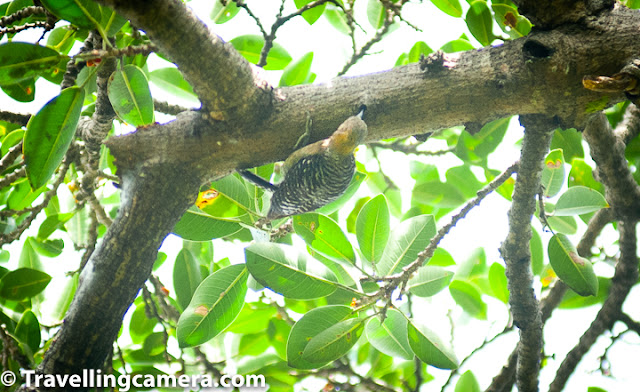 |
| Hoffman's Woodpecker Related Blog-post from Costa Rica - Travel Guide for Monteverde Cloud Forest Reserve, Costa Rica - Pura Vida ! |
Let's start first with the woodpeckers. Costa Rica has about 16 species of Woodpeckers, of which we saw three and were able to click just one. This also turned out to be the most common woodpecker to be spotted on Costa Rica - The Hoffman's Woodpecker. With its yellow nape and striped wings, this woodpecker is fairly easy to spot. We saw this woodpecker hard at work very close to our homestay in Monteverde.
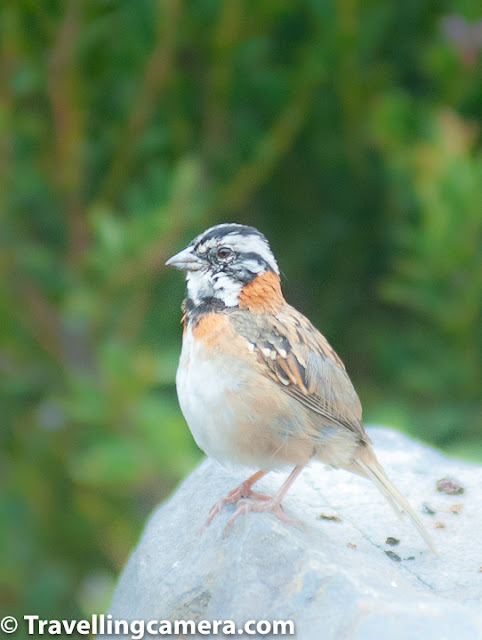 |
| Rufous-Collared Sparrow |
Sparrows, the next species we are going to talk about, are my personal favorite. In fact, back home in India, noisy and daring house sparrows are always welcome in my balcony. There are about 26 species of sparrows and finches in Costa Rica. We were fortunate to come across a few. The most remarkable was the Rufous-Collared Sparrow. This little bird has a white head with black stripes and a pronounced rufous stripe around the neck. Because of this striking coloration, these birds are easy to spot from a distance.
Related Blog-post from Costa Rica - Things not to miss in & around Jaco Town of Costa Rica - Beaches, Birds & Landscapes
 |
| Rufous-Collared Sparrow |
Related Blogpost from Costa Rica : Sunset Hues around Playa Veridor - Beaches around Papagayo Peninsula, Costa Rica
These sparrows are found almost everywhere and aren't intimidated by human presence. It is as commonly sighted in suburban settings as in the urban ones, but is mostly missing from densely forested areas. They feed on seeds, fallen grain, insects, and spiders, and are friendly and versatile.
Related Blog-post from Costa Rica - Travel Guide for Monteverde Cloud Forest Reserve, Costa Rica - Pura Vida !
 |
| Sooty Thrush |
Related Blogpost from Costa Rica - Teatro Nacional de Costa Rica in San Jose City of Costa Rica, Central America
Coming to the thrushes, the Sooty Thrush was earlier known as the Sooty Robin. This bird has a brown body with a belly that is several shades lighter than the wings. It has orange beak, legs and a striking yellow or orange eye ring. With a length of about 25 cm, this is a medium-sized bird and is endemic to Costa Rica and Panama. It feeds on spiders and insects and also on small fruit. preferring to hop around in open areas, this bird is quite easy to spot in Costa Rica.
Related Blog-post from Costa Rica - Incredible Birds of Costa Rica - Part 1 || Hummingbirds
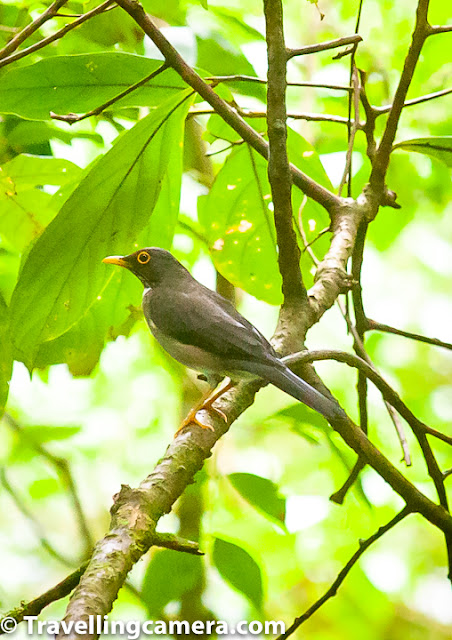 |
| Sooty Thrush |
Related Blogpost from Costa Rica - Hiking around Blanca Beach around Four Seasons Resort in Papagayo Peninsula, Costa Rica
Sooty Thrush's relative, the Clay-Colored Thrush (locally known as yigüirro), is the national bird of Costa Rica. We did see this bird, but it was at a distance and we were not able to click it. The bird is slightly smaller than the Sooty Thrush and is unremarkable in appearance. This makes one wonder why a country which is as blessed as Costa Rica, when it comes gorgeous birds, would choose such a plain looking bird as its national symbol. Indeed, when it comes to prettiness, the clay-colored thrush looks plain when compared to the Resplendent Quetzal, Orange-bellied Trogon, or the Scarlet Macaw. What makes it special though is its beautiful song, which can be heard even in urban settings, at the start of the rainy season.
Other Blogpost from Costa Rica - Tour of our room at Four Seasons Papagayo Peninsula, Costa Rica
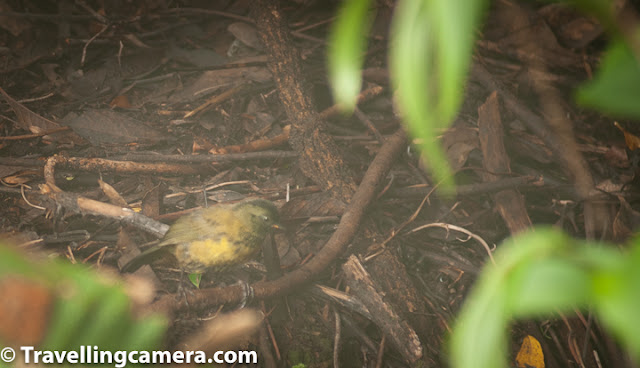 |
| Cape May Warbler |
Other Blogpost from Costa Rica - Tour of our room at Four Seasons Papagayo Peninsula, Costa Rica
A Cape May Warbler was spotted foraging in the undergrowth near the crater of Irazu Volcano. This bird is a rare migrant in Costa Rica and if indeed I have identified the bird correctly then this is one of our most precious photographs from Costa Rica. If this is a Cape May Warbler then it is either a juvenile male or an adult female. The adult male has a striking green back, tiger-like stripes on the chest and a very prominent chestnut cheek patch. It feeds on caterpillars and is also known to sip nectar from flowers or even from hummingbird feeders.
Related Blog-post from Costa Rica - Travel Guide for Monteverde Cloud Forest Reserve, Costa Rica - Pura Vida !
 |
| Blue-Gray Tanager |
Related Blog-post from Costa Rica - Things not to miss in & around Jaco Town of Costa Rica - Beaches, Birds & Landscapes
Speaking of Tanagers, we were lucky enough to spot three different varieties of these beautiful birds. The one that was easiest to spot was the blue-gray tanager, which we spotted on our way to Jaco beach and also in Monteverde. This bird is one of the prettiest we saw in Costa Rica. I especially loved its icy blue coloration. The bird is usually found in pairs or small flocks and feeds mainly on ripe fruit. However, it is also known to consume insects and nectar.
Related Blogpost from Costa Rica - Snorkeling & Catamaran ride in Pacific Ocean, Costa Rica
 |
| Blue-Gray Tanager
Related Blogpost from Costa Rica - Snorkeling & Catamaran ride in Pacific Ocean, Costa Rica
|
These birds like to nest in semi-open areas and are usually not found in dense forests. They are known to live in parks, forest edges, on roadside trees, and along the rivers. This versatile bird is bold and does not hesitate in nesting close to human population.
Related Blogpost from Costa Rica - Incredible Birds of Costa Rica - Part 2 || Motmots, Toucans, Trogons, Quetzals, and Macaws
 |
| Spangle-Cheeked Tanager |
A remarkable medium-sized bird, the spangle-cheeked tanager is a resident-breeder in Costa Rica. It is usually found in the highlands - at the edge of forests and in semi-open areas. It is usually found in pairs or even in mixed-family feeding flocks. It has dark head, throat, and upperparts. There is a blue-scaling on the breast and wings and tail has blue edging. Its belly is mostly rufous. It feeds on small fruit and also on insects and spiders. Both male and female are quite similar but the blue scaling in males is more pronounced that that in the females.
 |
| Sooty-capped Bush Tanager |
Another resident breeder in Costa Rica, the Sooty-Capped Bush Tanager has a gray head and yellow or olive upperparts and body. The belly is mostly white. Like the Blue-Gray Tanager and the Spangle-cheeked tanager, the sooty-capped bush tanager also likes to live in clearings close to the forests. They are found in mossy mountain forests and likes to feed on small fruit, insects, and spiders. They are often found in small groups or in mixed-species feeding flocks.
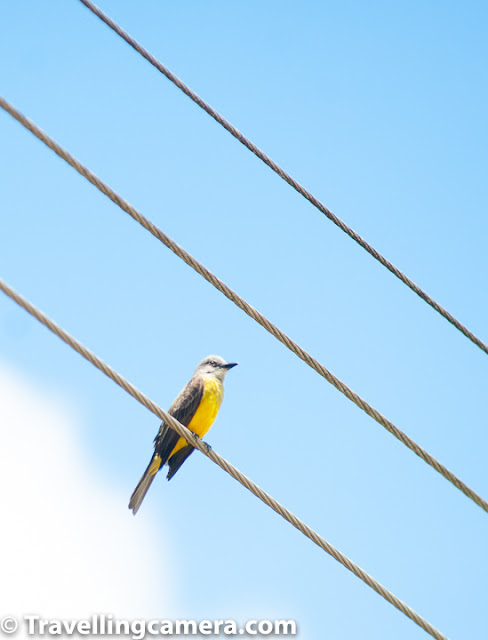 |
| Tropical Kingbird |
The Tropical Kingbird is a kind of tyrant flycatcher that can often be found perched on tree tops and electric cables watching out for possible prey. Once it spots a tasty-looking insect, the kingbird executes stupendous acrobatics to catch the unsuspecting insect. The bird has gray head with a dark eye mask. Its wings and forked tail are brown. Fiercely territorial in nature, the Tropical Kingbird is known for valiantly defending its territory against much larger intruders, such as toucans.
 |
| Blue-and-white Swallow |
The Blue-and-White Swallow can often be seen perched on electric cables. Often seen in small groups, the bird survives mostly on a diet of insects that it catches mid-air. The birds can be seen flying at high speeds and taking sharp turns to catch insects. The bird is identifiable because of its dark blue upperparts, a white neck and belly, and a forked tail. This is one species that has benefited because of deforestation, as it has led to an increase in the suitable habitat.
 |
| Orange-fronted Parakeet |
We spotted orange-fronted parakeets in Monteverde town. This was a large flock with close to 50 birds. This is not surprising because these parakeets are known to stay in large flocks, some as large as 100 birds. These parakeets are easily recognizable because of its blue crown, blue wings and a blue tail tip. It has an orange forehead and a bright yellow ring around the eye. The bird feeds on seeds, flowers, and fruits. Though the bird is not yet endangered, its numbers have gone down because of illegal pet trade.
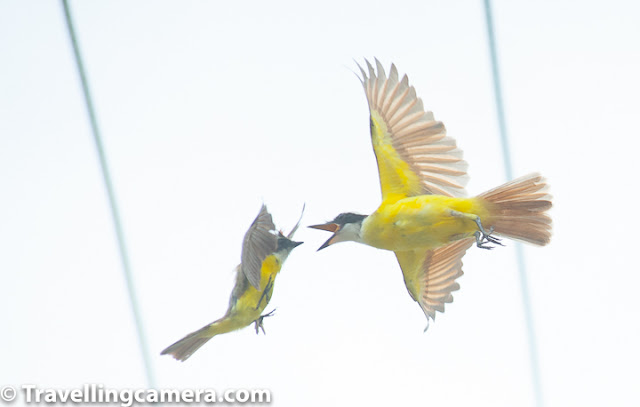 |
| Great Kiskadees having a discussion mid-air |
Boisterous and fearless, the Great Kiskadee is a tyrant flycatcher and can easily be spotted in various parts of Costa Rica. We saw it near Irazu Volcano and also in Monteverde. This is a large flycatcher, but is easily confused with lookalikes such as the social flycatcher and the boat-billed flycatcher. It is distinguishable because of a hint of red in its wings.
The last bird we will talk about in this post is the white-naped brush finch. The finch is identifiable by the yellow patch on its throat and a white line in the middle of its head. Its belly is gray or white and in some subspecies, it may also be yellow. It forages on the ground, in the undergrowth, and is often seen in small family groups.
We will talk about a few more birds we came across in Costa Rica in the last post in this series. Stay tuned.
Related Blogposts -


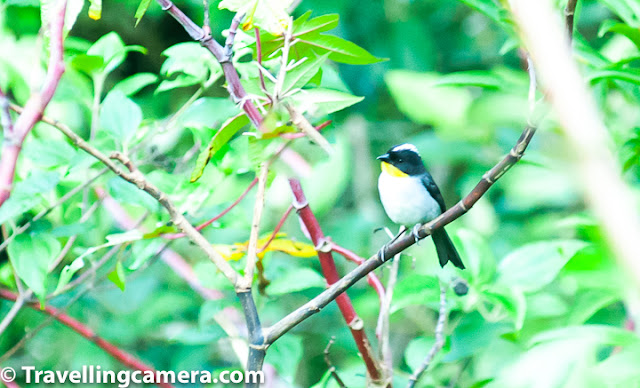







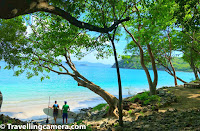
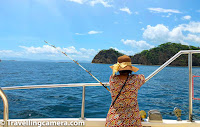





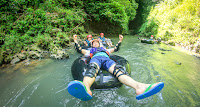



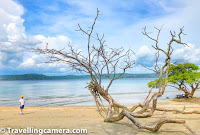

.jpg)
Comments